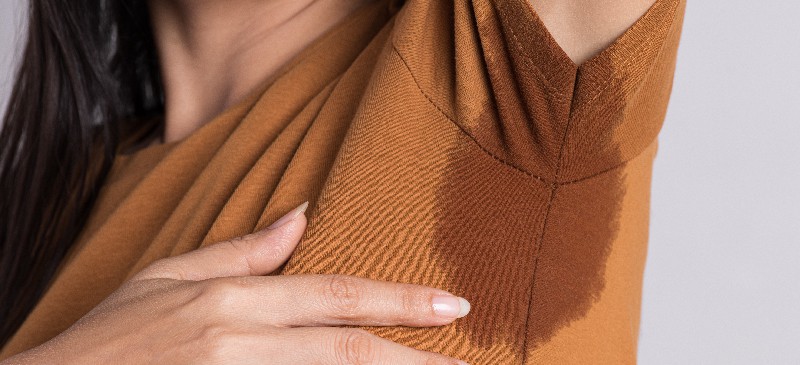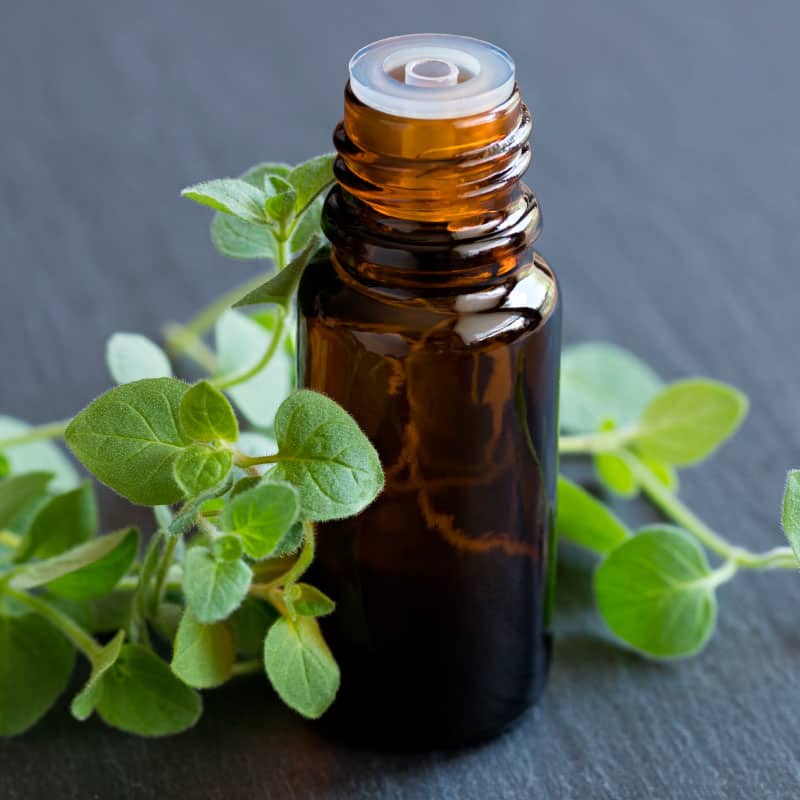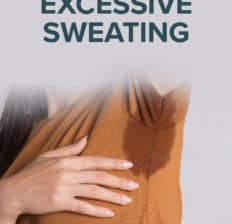This Dr. Axe content is medically reviewed or fact checked to ensure factually accurate information.
With strict editorial sourcing guidelines, we only link to academic research institutions, reputable media sites and, when research is available, medically peer-reviewed studies. Note that the numbers in parentheses (1, 2, etc.) are clickable links to these studies.
The information in our articles is NOT intended to replace a one-on-one relationship with a qualified health care professional and is not intended as medical advice.
This article is based on scientific evidence, written by experts and fact checked by our trained editorial staff. Note that the numbers in parentheses (1, 2, etc.) are clickable links to medically peer-reviewed studies.
Our team includes licensed nutritionists and dietitians, certified health education specialists, as well as certified strength and conditioning specialists, personal trainers and corrective exercise specialists. Our team aims to be not only thorough with its research, but also objective and unbiased.
The information in our articles is NOT intended to replace a one-on-one relationship with a qualified health care professional and is not intended as medical advice.
Excessive Sweating: What Causes Hyperhidrosis? + 6 Natural Treatments
August 17, 2023

Everyone sweats, and it is an absolutely necessary bodily function that cools the body down and prevents overheating. When your body is striving to maintain a normal body temperature, sweating may occur. Excessive sweating associated with hyperhidrosis, on the other hand, occurs without physical, mental, physiological, thermal or emotional stimuli or triggers.
Individuals with this condition sweat excessively when the body does not need to be cooled. Hyperhidrosis is estimated to affect more than 15 million people in the United States, according to a report published in the Archives of Dermatological Research.
This condition can adversely affect your overall quality of life. The severity of sweating can range from mild dampness to simply dripping wet.
Strangely enough, even when the symptoms are severe, the vast majority of those affected by hyperhidrosis and excessive sweating never seek medical care. In fact, a study published in the journal Dermatology found that only 27 percent of those surveyed had sought treatment.
Hyperhidrosis can be due to an underlying medical condition, a medicine, a supplement or genetics. According to the American Academy of Dermatology Association, when excessive sweating occurs in one or two areas of the body, it is a condition that most likely runs in the family.
Researchers are still studying this condition and looking for answers, but there are some natural ways that appear to help.
What Is Excessive Sweating?
Hyperhidrosis, or excessive sweating, can cause mild to severe sweating without normal triggers. We sweat to help keep our bodies at the proper temperature and avoid overheating, but those with this condition sweat excessively without the normal thermal, physical, mental or emotional conditions associated with sweating.
When broken down, hyperhidrosis actually translates to “too much sweating.” This medical condition is relatively common, affecting more than 15 million people in the United States.
Symptoms can range from mild to severe, and it may only affect one or two areas of the body, leaving the rest of the body dry.
There are two identified types of hyperhidrosis: primary and secondary.
Primary Hyperhidrosis
With this type, one or more areas of the body experiences excessive sweating, and the condition generally starts during childhood or adolescence. While it can occur anywhere, it often affects the underarms, hands, feet and forehead.
Interestingly, sweating often begins after waking up, and nighttime sweating is not generally associated with primary hyperhidrosis unless the room is too hot.
Secondary Hyperhidrosis
With this classification, the excessive sweating often occurs in all areas of the body, not just a couple, and you may experience symptoms while you sleep. Secondary hyperhidrosis is a result of an underlying health condition or is a side effect of a medication or supplement.
Excessive sweating can dramatically affect the quality of life and make day-to-day tasks difficult. When hands are affected, it can be difficult to open a door or hold the steering wheel of a vehicle properly without slipping. If the excessive sweating occurs under the arms, it can be unsightly and embarrassing in both professional and personal situations.
Related: What Are Meat Sweats? Plus How to Prevent Them
Signs and Symptoms
Recognized signs and symptoms include:
- Visible sweating
- Uncomfortable wetness in hands, feet, the scalp, groin and underarms
- Sweating actually interferes with daily tasks
- Skin in areas that sweat can peel or turn white
- Skin infections like athlete’s foot
- Night sweats
Causes and Risk Factors
The actual physiological reaction that causes excessive sweating happens when certain nerves communicate the need to sweat. These nerves can overreact, causing the troublesome symptoms.
Recognized causes and risk factors for hyperhidrosis include:
- Overactive sympathetic nerves
- Diabetes
- Gout
- Frostbite
- Infections
- Mercury poisoning
- Head trauma
- Hyperpituitarism
- Menopause
- Pregnancy
- Hodgkin’s disease
- Social anxiety disorder
- Obesity
- Hyperthyroidism and Graves’ disease
- Tumor
- Hypoglycemia
- Certain medications and supplements
- Having a family member with hyperhidrosis symptoms
- Monosodium glutamate (MSG)
- Caffeine
- Chocolate
- Hot sauce
- Curry
- Cumin
- Alcohol
- Withdrawal from alcohol or other substances

Conventional Treatment
To diagnosis hyperhidrosis, you may be referred to a dermatologist who will conduct a physical examination while asking specific questions about your specific symptoms. A sweat test may be ordered, and if your symptoms are believed to be due to an underlying health concern, additional tests and other specialists may be required.
For secondary hyperhidrosis, treatment of the underlying condition, or changing the medication or supplement that is causing the excessive sweating, may relieve symptoms. When symptoms persist, or for those with primary hyperhidrosis, your medical team may recommend:
Antiperspirants
Either over-the-counter or prescription antiperspirants may be recommended. You will be instructed to apply antiperspirants to the areas where sweating is a problem, like your hands, feet, neck, hairline or underarms. When you sweat, the antiperspirant is absorbed and plugs the sweat glands so you don’t produce so much sweat.
Prescription Medicines
Certain medications can be prescribed to prevent sweat glands from producing sweat across the entire body. This treatment is not without risk, and certain individuals, including those who live or work in a warm environment and athletes, should use extreme caution, as these medications may make it very difficult for your body to naturally cool itself.
Iontophoresis
This is a medical device that sends a low-voltage current through water you are soaking your hands or feet in. The electrical current causes the sweat glands to temporarily shut down, resulting in less sweat.
It can take six to 10 treatments that last 20 to 40 minutes each before you see results. You may need additional sessions — either weekly or monthly — to keep symptoms at bay.
Botulinum Toxin Injections
Botox injections may reduce sweating for anywhere from four months to six months. The botulinum toxin temporarily blocks a naturally occurring chemical that stimulates the sweat glands. It may take several days to experience the benefit.
Muscle weakness at the injection site can occur. Use caution if excessive sweating affects the palms of your hands.
Surgical Options
In severe and debilitating cases, your medical team may recommend surgery to remove the sweat glands from under your arms. A dermatologist may use liposuction, laser surgery, excision or may scrape out the sweat glands.
Another surgical option, sympathectomy, requires anesthesia and an operating room. In this surgery, your surgeon will manipulate the nerves that send messages to the sweat glands. This procedure is typically used on the palms of the hands.
Electromagnetic Energy Treatments
If your excessive sweating is experienced in your armpits, this treatment may be an option. In your physician’s office, your doctor will use a hand-held medical device that destroys sweat glands with electromagnetic energy. This treatment is newly approved by the FDA, and long-term side effects and long-term results aren’t known.
Natural Treatments
1. Practice Good Hygiene
For stinky feet, sweaty underarms and other areas of the body affected, wash and dry areas thoroughly, several times a day if necessary. As skin infections are common when the skin is continually moist, using a body wash or soap that is made from apple cider vinegar, witch hazel or tea tree oil may help prevent a bacterial or fungal infection.
2. Acupuncture
This ancient practice may be effective for treating excessive sweating. Your acupuncturist will start by determining what part of your body is causing the sweating. For example, heat accumulation in the stomach is thought to be linked to excessive sweating in the hands and feet, while a dampness and spleen deficiency may be associated with night sweats.
A case report published in the journal Acupuncture in Medicine points to successful use of acupuncture specifically for primary hyperhidrosis. Just three cases are highlighted in the report. In each case, acupuncture improved symptoms.
It is important to note that in two of the cases, 20 sessions were conducted, and in the other case, 25 sessions were done.
The points targeted during an acupuncture treatment will determine your specific diagnosis and needs. It is vital that you choose your acupuncturist wisely. Ask for recommendations from friends and family, and ask each practitioner you are considering about specific experiences treating hyperhidrosis.
3. Schisandra
Known for supporting adrenal function, lowering inflammation and improving liver function, schisandra may help stop excessive perspiration and night sweats, according to Traditional Chinese Medicine theory. (13)
In a study published in the Journal of Ethnopharmacology, researchers state that schisandra may be an effective candidate for the treatment of rheumatoid arthritis, spontaneous sweating, night sweating and other conditions as a result of a successful study of mice and schisandra.
Today, schisandra is available as a dried fruit extract, tincture, teas and pills. Start by taking the recommended dose of the product you select, and increase slowly until you experience an improvement in your symptoms. Do not consume in excess of three grams of this powerful medicinal berry daily.
4. Cognitive Behavioral Therapy
Hyperhidrosis can cause significant embarrassment and distress. In addition, it is considered a symptom of social anxiety.
For people who sweat profusely as a result of fears and anxiety, cognitive behavioral therapy may help relieve symptoms. With the assistance of a therapist, you can learn to change your reactions to stressors and change your thought patterns to help you manage stress and reduce anxiety.
5. Black Cohosh
For excessive sweating caused by menopause, take 80 milligrams of black cohosh one to two times a day. According to a systematic review of randomized, placebo-controlled trials published in the journal Alternative Therapies in Health and Medicine, black cohosh improved menopausal symptoms by 26 percent. The researchers encourage more studies to determine effectiveness and safety.
6. Practice Stress-Relieving Techniques Daily
Use stress-relieving techniques to combat the stress of excessive sweating and any underlying health condition. Add stress-busting activities like yoga, meditation and journaling to your daily routine, and start to find activities that help boost confidence and keep you connected to friends and family.
Related: Tips for Working Out in the Heat Safely (Plus Its Benefits)
Precautions
Hyperhidrosis is not a serious health condition, but it can disrupt daily activities and cause significant stress.
In addition, in some cases, excessive sweating can be caused by serious underlying health conditions, including:
- Diabetes
- Mercury poisoning
- Head trauma
- Hodgkin’s disease
- Certain types of cancer
- Tumor
- Frostbite
When using conventional treatments be sure to consider side effects of the medications and surgical options before proceeding.
Final Thoughts
- Hyperhidrosis, or excessive sweating, is considered a skin condition and is often treated by dermatologists.
- Causes of hyperhidrosis include nerve communication problems and certain underlying health conditions, including diabetes, obesity, menopause, gout, certain types of cancers, hypoglycemia and others.
- Symptoms can range from mild to severe, and sweating can occur in one or more areas of the body.
- Excessive sweating commonly occurs in the armpits, feet, palms of the hands and around the hairline.
- Conventional treatments including medications, antiperspirants, medical devices and surgeries, but they all come with certain side effects and risks.
- Natural ways to help deal with excessive sweating include practicing good hygiene, acupuncture, schisandra, cognitive behavioral therapy, black cohosh and practicing stress-relieving techniques.









